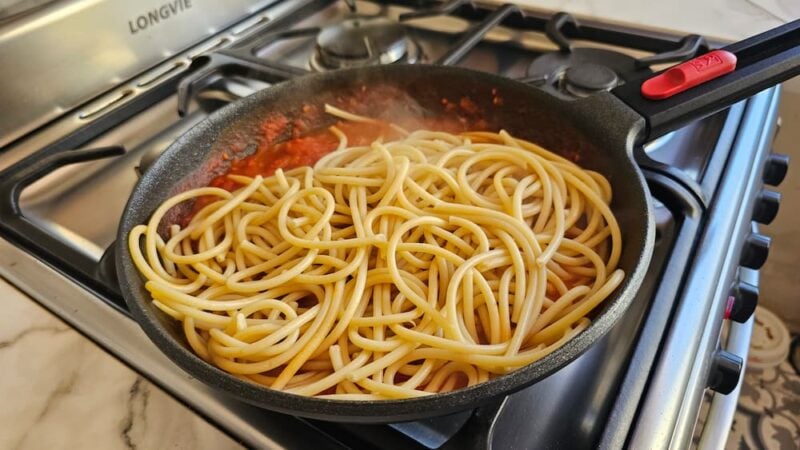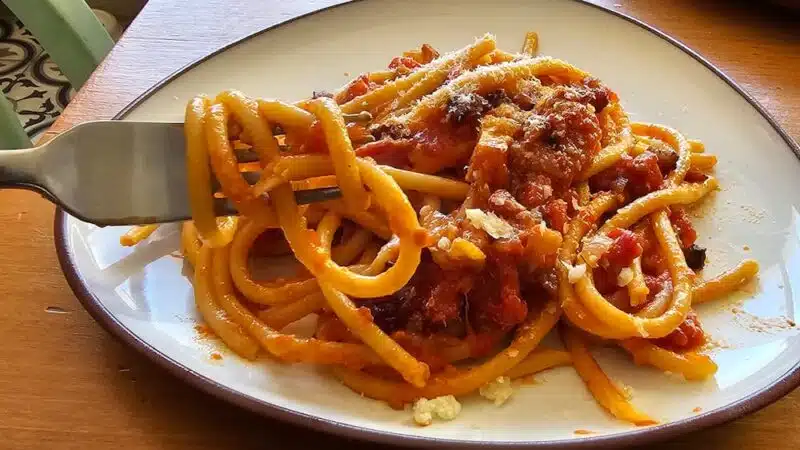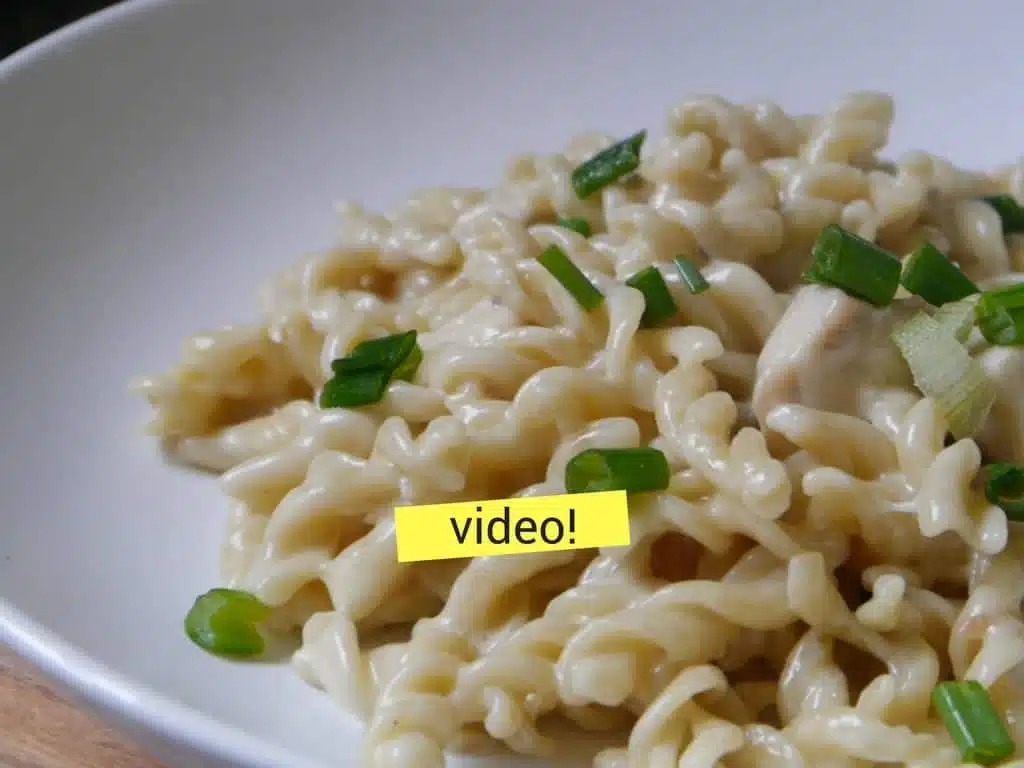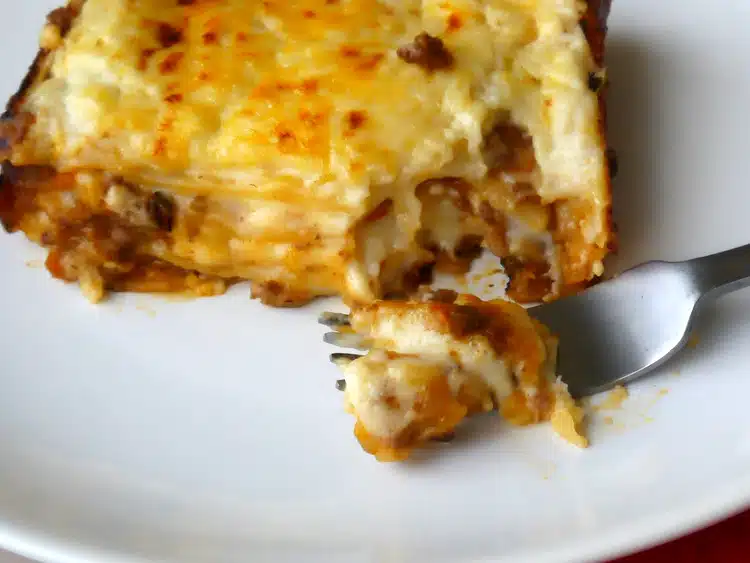Pasta Amatriciana is one of the jewels of Roman cuisine and, without a doubt, one of our favorite pasta recipes, thanks to its simplicity and unique flavor. It's so simple that you can prepare it in just 15 minutes, with a sauce that can transform any dry pasta dish into a flavorful experience.
When it comes to making homemade pasta, there are many recipes that stand out, but without a doubt, amatriciana pasta holds a special place in the hearts of Italian cuisine lovers. It's a Roman classic that transports us to the streets of Rome with its flavor. Let's see how to make amatriciana pasta step by step , with some tips to make your next pasta dish unforgettable.
Content table
About Pasta Amatriciana
Pasta Amatriciana is an iconic dish of Roman cuisine. A unique dish characterized by its simplicity and the use of authentic ingredients such as guanciale , a cured pork cheek, fresh tomatoes, and pecorino Romano.
Simply put, this is an Italian pasta dish that, when paired with amatriciana sauce, becomes a blend of intense flavors, with a spicy touch that enhances its character. It's a dish that embodies the essence of Italian cuisine : simple, yet deeply flavorful.
Origins of Spaghetti all Amatriciana
Pasta Amatriciana has its roots in Amatrice, a small mountain town in the Lazio region of Italy.
- It's an iconic dish that began as a popular and simple preparation for shepherds . Originally, this dish was known as "gricia," which consisted of pasta, guanciale (cured pork cheek), and pecorino cheese.
In the 18th century , the recipe evolved with the arrival of tomatoes in Europe, becoming a version more similar to the amatriciana we know today. The dish quickly gained popularity in Rome, where it became one of the pillars of traditional Roman cuisine.
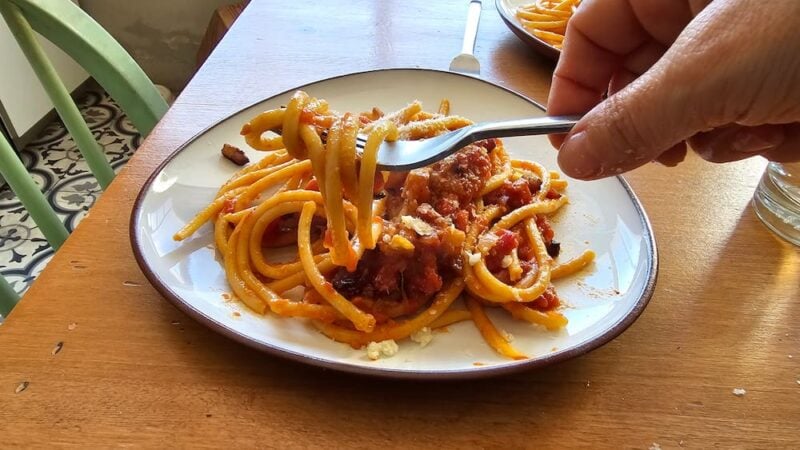
What does “à la Amatriciana” mean?
The phrase "amatriciana style" directly refers to something made in the style of Amatrice, the town where this recipe originated. So when you make a pasta dish amatriciana style , you're enjoying a little piece of Italian history and tradition.
If you want to take this recipe to the next level and perhaps make your own homemade pasta, I've left you a selection of homemade pasta recipes from this blog for you to browse.
Guanciale or Pancetta? Adaptations and Realities
The traditional recipe for Pasta Amatriciana includes guanciale among its original ingredients, which is cured pork cheek, an ingredient that, unfortunately, is not always easy to obtain.
If you're having trouble finding Italian guanciale for amatriciana , don't worry, Aunt Paulina will show you how to use smoked bacon as an alternative. Although it's not the same, I promise the result is just as delicious.
Onion and tomato: key elements
There are many traditional recipes for this dish where onion is considered unnecessary and should not be included in Pasta Amatriciana . However, on this team, we love the flavor it adds.
- If you decide to include onion, chop it very finely and add it to the preparation in the pan with a little salt, cooking it over low heat until translucent.
For the sauce, we definitely use canned peeled tomatoes. It's important to check the ingredients on the can: it should contain only natural tomatoes, without additives like tomato puree or pre-made sauce.
If you prefer, you could also consider using peeled or crushed cherry tomatoes , but it's best if you make sure they're 100% natural. Crushing the tomatoes by hand is part of the experience in this recipe, achieving a rustic texture, like the one you'd find in Rome.
Tips for perfect Pasta Amatriciana
- Choose the right pasta : Although you can use any type of pasta, spaghetti amatriciana or bucatini are the most traditional options.
- Cook the pancetta thoroughly : If you're using pancetta instead of guanciale, be sure to cut it into thin strips and cook it in a pan without oil until well browned.
- Control the cooking of the pasta : Cook the pasta in a pot with plenty of water and salt. It is best to follow the manufacturer's instructions, calculating one minute less than the estimated cooking time, to finish in the pan with the sauce.
- The right cheese makes all the difference : The traditional recipe calls for Pecorino Romano, a sheep's milk cheese with a strong, salty flavor that complements the sauce very well. If you can't find it, you can use a good Parmesan cheese.

Common mistakes when preparing Pasta Amatriciana
When preparing amatriciana pasta , it's important to avoid certain common mistakes that can affect the final result. Here are some tips to avoid problems:
- Don't use too little water to cook pasta : Pasta needs room to move around, allowing it to cook evenly. Make sure you use a large pot with plenty of water.
- Do not add oil to the cooking water : Although it may seem like it helps prevent pasta from sticking together, it actually does not.
- Don't over-drain the pasta : It's a good idea to reserve some of the cooking water and add it to the sauce to make it creamier; this also helps it adhere better to the pasta.
Enjoy the authenticity of amatriciana in every bite
Pasta amatriciana is more than just a recipe; it's a flavor experience, a simple dish that depends on the quality of the ingredients but can be excellent. Whether you're using guanciale or pancetta , the important thing is to follow the techniques you'll learn below, which are what make this dish a classic.
Try making this recipe at home and discover why amatriciana is, for many, the undisputed queen of Roman pasta. And don't forget to top it with a little more cheese at the end.
Follow on Instagram ( here )
and on YouTube that I upload new recipes every week ( click here )
Watch this recipe step by step on YouTube.
Recipe for making Pasta Amatriciana
Yields: 4 servings
Preparation time: 35 minutes
Ingredients:
- 200 g guanciale (or smoked bacon)
- 400g pasta (bucatini is the traditional option)
- 400g canned peeled tomatoes (or fresh cherry tomatoes)
- 1 small onion or half a large onion, finely chopped (optional)
- 50 ml of white wine
- 1 whole chili pepper (optional, adjust or remove depending on the desired spice level)
- Extra virgin olive oil (optional)
- Salt to taste
- Grated Pecorino Romano (preferable) or Parmigiano-Reggiano
How to make Pasta Amatriciana:
- Cut the guanciale (or pancetta) into thin strips.
- Heat a frying pan without oil and add the guanciale. Cook over medium heat until it releases its fat and lightly browns. If you prefer a spicy touch, add the whole chili pepper at this point. If using olive oil, add just a little (although it's not necessary, as the guanciale will release its own fat).
- Remove the guanciale from the pan and leave some of the fat in the pan to cook the onion (optional) over low heat, along with a pinch of salt. Cook the onion until translucent, about 5-7 minutes. Then, add the white wine and let the alcohol evaporate completely before moving on to the next step.
- Mash the peeled tomatoes with your hands if they're canned, or cut fresh cherry tomatoes in half. Add the tomatoes to the pan and cook over medium-low heat. If using canned tomatoes, cook for about 10 minutes; if using fresh tomatoes, cook for 15-20 minutes until they're completely broken down.
- Meanwhile, bring a pot of water to a boil with plenty of salt and cook the pasta according to the package directions until al dente (usually 8 to 10 minutes).
- Reserve a ladleful of the pasta cooking water and add it to the pan with the sauce to make it creamy and help blend the flavors.
- Drain the pasta and add it directly to the pan with the sauce. Cook for a couple more minutes, stirring well to blend the flavors.
- Serve the pasta immediately with a generous amount of grated Pecorino Romano on top.
